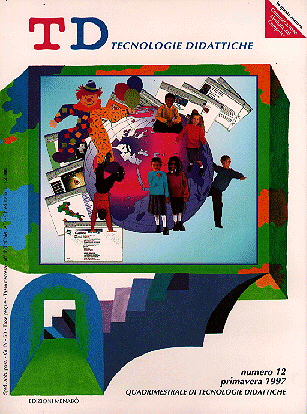Computer supported music education
Main Article Content
Abstract
Article Details
Section
Authors who publish with this journal agree to the following terms:
- Authors retain copyright and grant the journal right of first publication with the work simultaneously licensed under a Creative Commons CC BY 4.0 Attribution 4.0 International License.
- Authors are able to enter into separate, additional contractual arrangements for the non-exclusive distribution of the journal's published version of the work (e.g., post it to an institutional repository or publish it in a book), with an acknowledgement of its initial publication in this journal.
- Authors are permitted and encouraged to post their work online (e.g., in institutional repositories or on their website) prior to and during the submission process, as it can lead to productive exchanges, as well as earlier and greater citation of published work (See The Effect of Open Access)
References
Angelides M. C. (1994). Implementing multiple tutoring strategies in an intelligent tutoring system for music learning. Journal of Information Technology, 10 (1), 52-62.
Biasutti M. (1990). Estetica, analisi e psicologia dei processi artistici contemporanei. Attualità in Psicologia, 6 (1), 23-33.
Chen S. S., Dennis J. R. (1993). Linking different cultures by computers: a study of computer-assisted music notation instruction. Journal of Educational Technology Systems, 21 (3), 207-224.
Forsythe, R. (1984). The development and implementation of a computerized preschool measure of music audiation (aptitude, ability, testing). Unpublished doctoral dissertation, Case western reserve University, Cleveland.
Herrold R. M. (1977). The development and trial of a computer managed test of music fundamentals. Oregon Council for Research in Teacher Education. Eric.
Higgins W. (1992). Technology. In R. Colwell (Ed.), Handbook of research on music teaching and learning. (pp. 480497). New York: Mc-millan.
Hofstetter F. T. (1978). Computer-based recognition of perceptual patterns in harmonic dictation exercises. Journal of Research in Music Education, 26(2), 111-119.
Hofstetter F. T. (1979). Evaluation of a competency-based approach to teaching aural interval identification. Journal of Research in Music Education, 27(4), 201-213.
Hofstetter F. T. (1981). Applications of the GUIDO system to aural skills research, 1975-1980. College Music Symposium, 21, 46-53.
Hughes T. (1994). A hypermedia listening station for the college music literature class. Research Studies in Music Education, 3, 3-14.
Lamb M. R., Bates, R. H. T. (1978). Computerized aural training: An interactive system designated to help both teachers and students. Journal of computer-based instruction, 5(1-2), 30-37.
MacGregor R. (1994). Music notational software based on children’s own symbolic representations of sound. Research Studies in Music Education, 3, 15-24.
McCarthy J. (1984). The pitch test. Creative computing, 3, 211-217.
Pembrook R. G. (1986). Some inplications of students’ attitudes toward a computer-based melodic dictation program. Journal of Research in Music Education, 34(2), 121-133.
Peters G. D. (1978). Percussion instruction methods by computer. The Instrumentalist, 32(6), 41-43.
Radocy R. E. (1971). Development of a computerized criterion-referenced test for certain nonperformance musical behaviors requisite to teaching music. Unpublished doctoral dissertation, Pennsylvania State University, University Park.
Robinson R. L. (1988). Drake musical aptitude test (computer program). Bellevue: Temporal acuity products.
Schaeffer P. (1966). Traité des objets musicaux. Parigi: Edition du Seuil.
Stech D. A. (1994). The MIDI sequencer/ sound module as critical listening device. Research Studies in Music Education, 3, 36-43.
Upitis R. (1989). The craft of composition: Helping children to create music with computer tools. Psychomusicology, 8(2), 151-163.
Webster P. (1989). Composition software and issues surroundings its use in research settings with children. Psychomusicology, 8(2), 163-169.
Weidenbach V. (1994). Technology teaching the teacher: a study of keyboard instructional praxis in a computer-based learning environment. Research Studies in Music Education, 3, 44-53.

